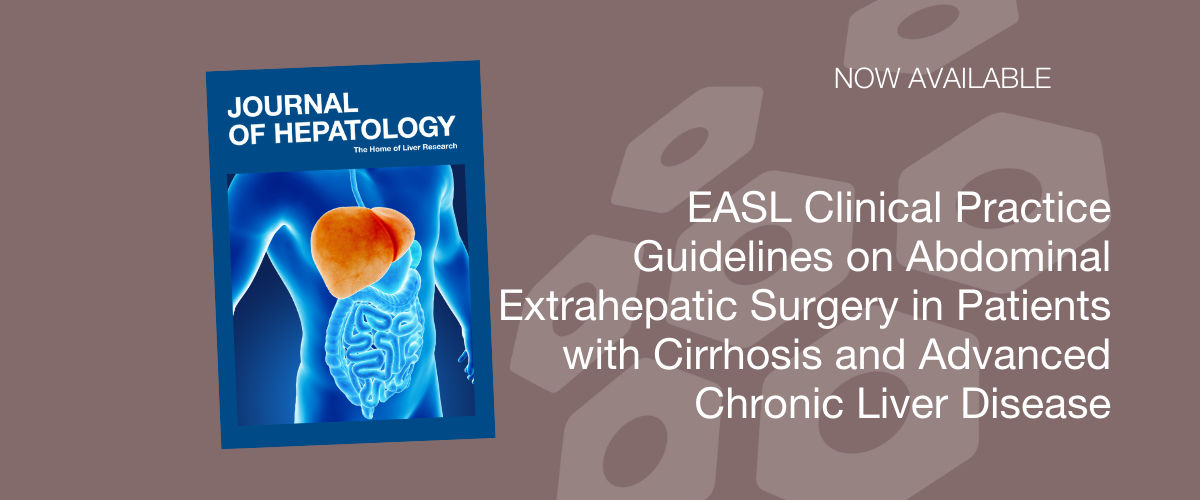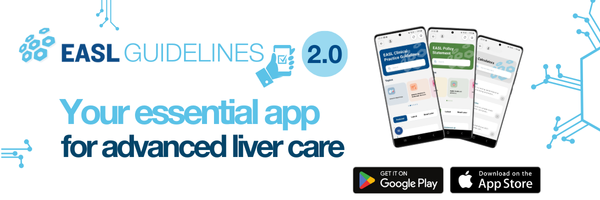New EASL Clinical Practice Guidelines on abdominal extrahepatic surgery in cirrhosis and advanced chronic liver disease

EASL has published its Clinical Practice Guidelines on abdominal extrahepatic surgery in cirrhosis and advanced chronic liver disease. These guidelines represent a critical step forward in improving outcomes for a growing and vulnerable patient population.
Addressing a complex clinical challenge
With the global rise in chronic liver disease and improved long-term survival among patients with cirrhosis, the need for non-hepatic abdominal surgery in this group is increasing. Yet cirrhosis significantly elevates perioperative risk, presenting a persistent challenge for clinicians. The new EASL CPGs offer a comprehensive, evidence-based framework for optimising patient care before, during, and after surgery..
Key recommendations and innovations
These guidelines consolidate the latest advancements in preoperative risk stratification, surgical techniques, and perioperative care, integrating them into a structured, multidisciplinary approach. Core recommendations include:
• Individualised, patient-centred risk assessment: Emphasis on tailoring management to the specific risk profile of each patient.
• Multidisciplinary decision-making: Encouragement of collaboration among hepatologists, surgeons, anaesthesiologists, and other specialists.
• Optimised care pathways for elective and emergency surgeries: Guidance on structured planning for elective cases and rapid-response tools for emergencies.
• Standardised perioperative protocols: To minimise complications and support recovery in patients with cirrhosis.
Clinical benefits for frontline providers
For clinicians, these guidelines are a valuable tool for balancing surgical necessity with liver-related risk. By providing clear, actionable protocols, the CPGs help reduce uncertainty and improve surgical outcomes in patients with cirrhosis. Importantly, the guidelines also foster a culture of teamwork and shared decision-making, essential for navigating the complex interplay between surgical risk and hepatic function.
Enabling better coordination across teams
The new EASL guidelines strengthen multidisciplinary care by offering a unified framework for both elective and emergency scenarios. From early risk discussions to postoperative monitoring, the guidelines promote timely coordination among all relevant stakeholders. This ensures that each phase of surgical care is optimised, improving the consistency and quality of outcomes across diverse healthcare settings.
A global step forward in surgical care for liver disease
By standardising best practices and encouraging evidence-based decision-making, EASL aims to improve perioperative outcomes for cirrhotic patients worldwide. These guidelines are particularly impactful in settings where expertise or infrastructure may vary, offering a reliable reference to guide clinical decisions and resource allocation.
Guidelines on the go!
To support their widespread adoption, the new CPGs are available through the EASL Guideline app, offering healthcare professionals mobile access to recommendations anytime, anywhere. Whether during consultations, in preoperative discussions, or multidisciplinary meetings, clinicians can instantly consult up-to-date guidance, reinforcing best practices, enhancing their accessibility and usability, and promoting real-time, informed decisions in patient care regardless of setting or geography.


